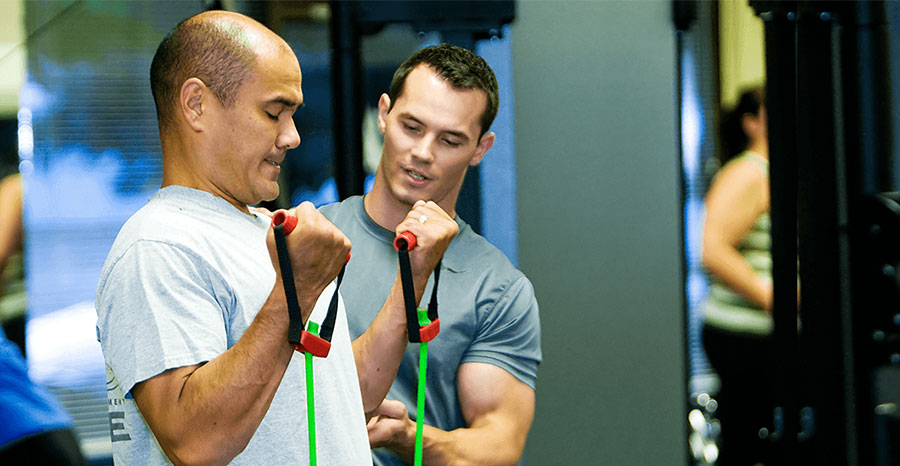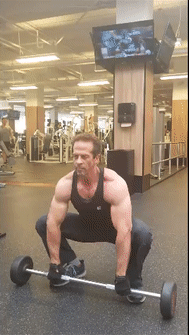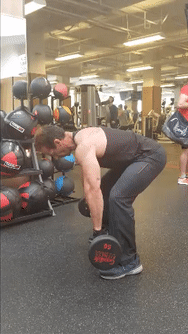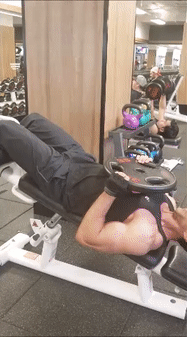
A Simple, Effective Training Program for Newbies
In past posts, I’ve talked about how losing muscle mass is very, very bad, as it lowers our Basal Metabolic Rate and makes us more susceptible to gaining fat. But conventional wisdom is, if you want to lose weight, you need to do lots of cardio. So what’s the truth? Which method is better for losing weight?
This answer is both.
A comprehensive exercise program that consists of both weight training and cardio exercise, combined with a healthy diet will result, not just in weight loss, but fat loss, which is the real goal – losing fat while keeping (or even building) muscle.
But if you’re just starting out, how do you do that? How often should you exercise? What kind of weight training and cardio should you do? How intensely should you exercise and how much is too much? What follows is a simple, yet effective workout program that anyone of any ability can do, and that will result in preserving muscle mass while burning fat.
Weight Training: Doing it Right
The first question I always get asked is “What exercises should I do?” Here’s a workout program that will work your entire body in a reasonable period of time and, as long as you ease in to it, won’t leave you so sore you can’t move the next day.
 Exercise 1: Squats
Exercise 1: Squats
The absolute best lower body/core exercise ever! You’ll need a power cage and a barbell loaded with weights, or a Smith machine. Initially you shouldn’t lower the weight beyond what’s known as a half-squat. This means your knees go to 90 degrees and no farther! In time, you can experiment with deeper squats but stop if you start to experience knee pain.
 Exercise 2: Deadlifts to Shoulder Presses
Exercise 2: Deadlifts to Shoulder Presses
Start with a barbell on the floor. Keeping your back straight and lifting with your legs, pull the bar to your waist, then pull it up to your shoulders. Now press the weight over your head. Lower the weight carefully to the floor and repeat. This will work your lower back, legs, arms and shoulders. It’s a full body weight exercise!
 Exercise 3: Bent Over Rows
Exercise 3: Bent Over Rows
Load a barbell with weights. Bend over at the waist and grip the bar. Use your back and legs to raise the bar slightly off the floor. Now, keeping your back straight, pull the weight to your chest. Repeat to failure. This will strengthen your back, core and arms.
 Exercise 4: Situps to Presses
Exercise 4: Situps to Presses
This works especially well if you have a reverse incline bench (where your head is lower than your waist). Grip a plate in both hands and hold it to your chest. Do a sit up. At the top of the sit up, press the weight over your head (this will work your shoulders and triceps). Reverse the sit up until you are once again lying on the bench. Press the weight above you (this will use your chest muscles and triceps). You can also use dumbbells or a barbell for the weight.
SuperSets
Move directly from one exercise to the next without resting in between. This is called a ‘superset’. It will work every major muscle in your body while improving your endurance. Take a few minutes rest after the Sit Ups/Presses and repeat twice more.
Now that you’ve completed 3 supersets, it’s time for cardio!
Cardio
You need to do at least 20 minutes of cardio for it be effective. I recommend starting with 5 minutes on the rowing machine. Rowing is exhausting, but also the most effective overall body workout ever invented. You should row at the highest intensity you can manage for those 5 minutes.
Once that’s done, do another 15 minutes of moderate cardio of your choice. Running on a treadmill, using an elliptical trainer, a stair climber or riding a stationary bike. Any of these are good and will finish off your workout.
At first you’ll need to take it slow. Maybe only do two supersets and go slower on the cardio than you feel you can. This will avoid overstraining your body and ending up really sore the next day. A little sore is good, but so sore you can’t move naturally is not. Don’t rush it. As your body tones up and your heart and lungs get stronger you’ll find yourself pushing harder without even thinking about it.
How Much Weight Should You Lift?
This is another question I get all the time. Fortunately there’s a simple answer to this one too.
You should always lift to failure. This means that the last repetition you do should be the last repetition you can do. If you’re just starting out, or your goal is to improve muscle tone without gaining muscle mass, you should be doing between 12 and 20 reps. If you can’t do at least 12, the weight is too heavy. If you can do more than 20, the weight is too light. Adjust until you’re in the zone.
If your goal is to gain muscle mass, then the range should be between 6 and 12 reps. Again, if you can’t do at least 6 clean reps (no cheaters!) it’s too heavy. If you can do more than 12, it’s too light. Experimentation will tell you where your best range is. Mine is between 10 and 12 reps. This is the range where I get the quickest strength gains, but everyone is different.
Note that if you are young and have not yet reached your full growth, you should never lift ‘heavy’. This can damage your joints and stunt your growth. Stick in the 12 to 20 rep range until you’re full grown. For girls this is usually around 16 and for guys around 18 – 19. Don’t rush to lift heavy! You will regret it later in life.
As always, consult your physician before embarking on any new exercise program.
Will Dove
Latest posts by Will Dove (see all)
- Body Weight Training 2.0: Calisthenics - 22 Apr
- All About Protein Powders - 9 Apr
- Top 5 Fitness Trends for 2019 That You Should Try - 30 Mar
